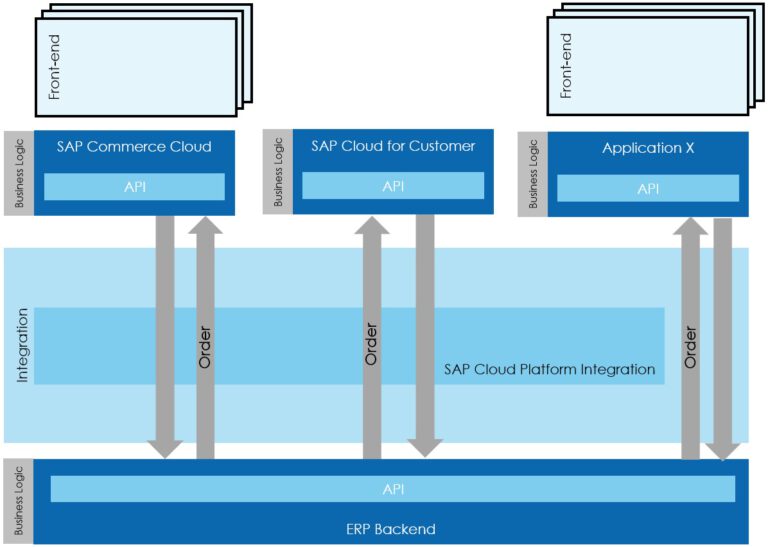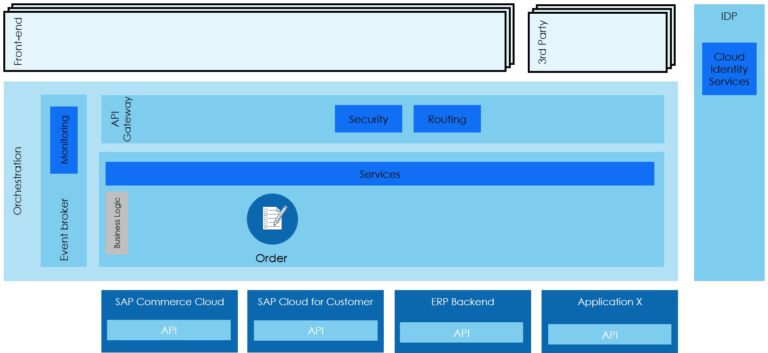Gert-Jan Stolmeijer
Read all my blogsFrom Integration to Service
In today’s world, businesses are constantly evolving to meet the ever-changing demands of customers and consumers. One significant shift in recent years has been the transition from traditional integration-focused models to more service-oriented approaches. This transformation has several advantages which will be discussed in this blog.
Era of Integration
Most businesses have setup their landscape to work in silo’s. SAP is also providing out-of-the-box mainly point-to-point connections between different solutions. This siloed approach often resulted in inefficiencies, as information and resources were not shared seamlessly across the organization. Additionally, customers had limited access to products and services, often requiring them to interact with multiple vendors or systems to fulfill their needs and might even experience inconsistencies for the same information.
Let’s discuss an example which most companies will recognize. If we take a landscape where we have an ERP backend system, an E-Commerce solution, a CRM solution and an app which provides order information for delivery companies. In this case we focus on order information which is stored in the ERP backend system. In most current landscape’s this order information is replicated to different systems like E-Commerce, CRM and also to an external app for partner’s when needed. The logic to determine which data should be replicated and specific rules how to present what data (for example based on country) is separated in the different integration lines.

The Rise of Service-Oriented Models
However, as technology advanced and customer/consumer preferences shifted, businesses realized that integration alone was not enough to stay competitive. Customers no longer just wanted products; they craved seamless experiences, personalized solutions and self-service capabilities. Customers expect that a company can adopt quickly to fulfill their needs. This shift in demand gave rise to service-oriented business models. Service-oriented models focus on delivering value-added services.
The Impact on Business Landscape
The transition from integration to service has had an impact on the business landscape. Instead of having many point-to-point interfaces in the landscape its better to build a service which contains all the relevant information in one place, which can be used by multiple applications to retrieve the needed information.
Let’s take the example of the order interface again. Now we will develop a general order service which contains all order information and status information. This order service retrieves information from different sources to bring all information together. All solutions in the landscape can now use this service to provide the information to the customer in a uniform way. As a result the E-Commerce solution, the CRM solution and the app can all make use of the same service. All business logic can be placed on one central place.

Landscape using services to provide information
Advantages of Service Oriented
It will take a huge step to transform your landscape into a service based model. Therefore the advise is to take small steps and transform object by object. However business will do this only if there is a potential benefit to make this change. We have listed some advantages:
- Faster time-to-market
When the information is centrally available its easy to provide the needed information to a certain application. This can be a commerce frontend or an app or anything else. - Pulling information in place of replication
When there is a central service the application can request the needed data thru pulling the information in when needed. No need to replicate this information thru the whole landscape. - Uniform information
Using a central service means that you provide exactly the same information into all channels and solutions. This will prevent that customer will see different information on different applications or channels. - Integrate 3th party
When you have to embed a partner into your process then this partner also needs to have the relevant information to provide the best service. Having a service model makes it more easy to add this partner into your daily processes. - Self-Service capabilities
Having the relevant objects available as a service also makes it more easy to provide the customer with all available information giving the customer more information and control over the self-service possibilities.
This landscape which is service oriented can drive growth, faster innovation and stay relevant in an increasingly digital world.
Conclusion
Transforming the landscape from an integration to service related model can be a big change. However its possible to do this change in small steps. Just define separate models in your landscape and replace the integration with a central service. After that it’s easy to give the customer an uniform experience in all channels and add additional functionality into your landscape faster then using point-to-point connections.
